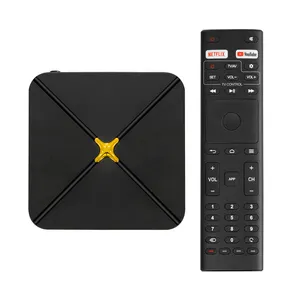Popular in your industry













































































































































































Top categories
About tv channels frequencies
Understanding TV Channels Frequencies
TV channels frequencies refer to the specific electromagnetic spectrum range allocated for broadcasting television signals. These frequencies are crucial for ensuring seamless transmission and reception of television programs across different regions. Understanding TV channels frequencies is essential for businesses in the broadcasting industry to optimize signal quality and coverage.
Technical Specifications
When dealing with TV channels frequencies, it is important to consider various technical specifications. Parameters such as bandwidth, modulation, and encoding methods play a vital role in determining the quality and reach of TV signals. Additionally, factors like transmitter power, antenna design, and frequency allocation regulations impact the overall broadcasting ecosystem.
Optimizing Broadcast Quality
To enhance the broadcast quality of TV channels, broadcasters often need to fine-tune the frequencies used for signal transmission. By optimizing frequencies based on regional signal interference and propagation characteristics, businesses can ensure better reception for viewers. This process involves conducting frequency scans, analyzing signal strength, and adjusting transmission parameters accordingly.
Regulatory Compliance and Licensing
Operating within the legal framework of TV channels frequencies requires businesses to adhere to regulatory compliance and licensing guidelines. Obtaining the necessary permits for frequency usage, ensuring signal conformity with national standards, and complying with spectrum allocation regulations are essential for sustainable broadcasting operations. Non-compliance can lead to penalties and service disruptions.
Future Trends and Technologies
The landscape of TV channels frequencies is constantly evolving with advancements in technology. From the implementation of digital broadcasting standards to the emergence of 5G-enabled TV transmission, businesses need to stay abreast of future trends. Exploring technologies like adaptive frequency hopping and dynamic spectrum sharing can pave the way for more efficient and resilient broadcasting systems.
Frequency Optimization Strategies
One of the key strategies for businesses in the broadcasting sector is optimizing TV channels frequencies for improved signal delivery. Conducting frequency audits to identify interference sources, utilizing spectrum analyzers for signal monitoring, and employing adaptive frequency modulation techniques can help enhance broadcast quality. By continuously optimizing frequencies, businesses can ensure a seamless viewing experience for audiences.
Enhancing Signal Resilience
Ensuring signal resilience in TV broadcasting requires businesses to mitigate potential sources of signal degradation. By implementing frequency diversity schemes, utilizing error correction techniques, and deploying redundant transmission paths, broadcasters can enhance signal robustness. These strategies help minimize signal disruptions due to environmental factors or technical issues.
Strategic Frequency Planning
Effective frequency planning is crucial for businesses to optimize the utilization of TV channels frequencies. Conducting propagation studies to analyze signal coverage, strategically allocating frequencies based on geographic considerations, and coordinating frequency assignments with regulatory bodies are integral parts of the planning process. By strategically planning frequency usage, businesses can maximize signal reach and reliability.
Adapting to Digital Broadcasting
The transition to digital broadcasting has reshaped the landscape of TV channels frequencies. Businesses need to adapt to digital broadcasting standards, such as DVB-T2 and ATSC 3.0, to ensure compatibility with modern TV receivers. Embracing digital modulation techniques, optimizing MPEG encoding parameters, and implementing efficient error correction mechanisms are essential for seamless digital broadcast delivery.
Emerging Technologies in Frequency Management
With the advent of software-defined radio (SDR) and cognitive radio technologies, businesses have new tools for managing TV channels frequencies. SDR enables flexible frequency reconfiguration, dynamic spectrum access, and adaptive modulation schemes. Cognitive radio systems enhance spectrum efficiency by intelligently selecting frequencies based on real-time environmental conditions. Leveraging these emerging technologies can revolutionize frequency management in the broadcasting industry.


























































